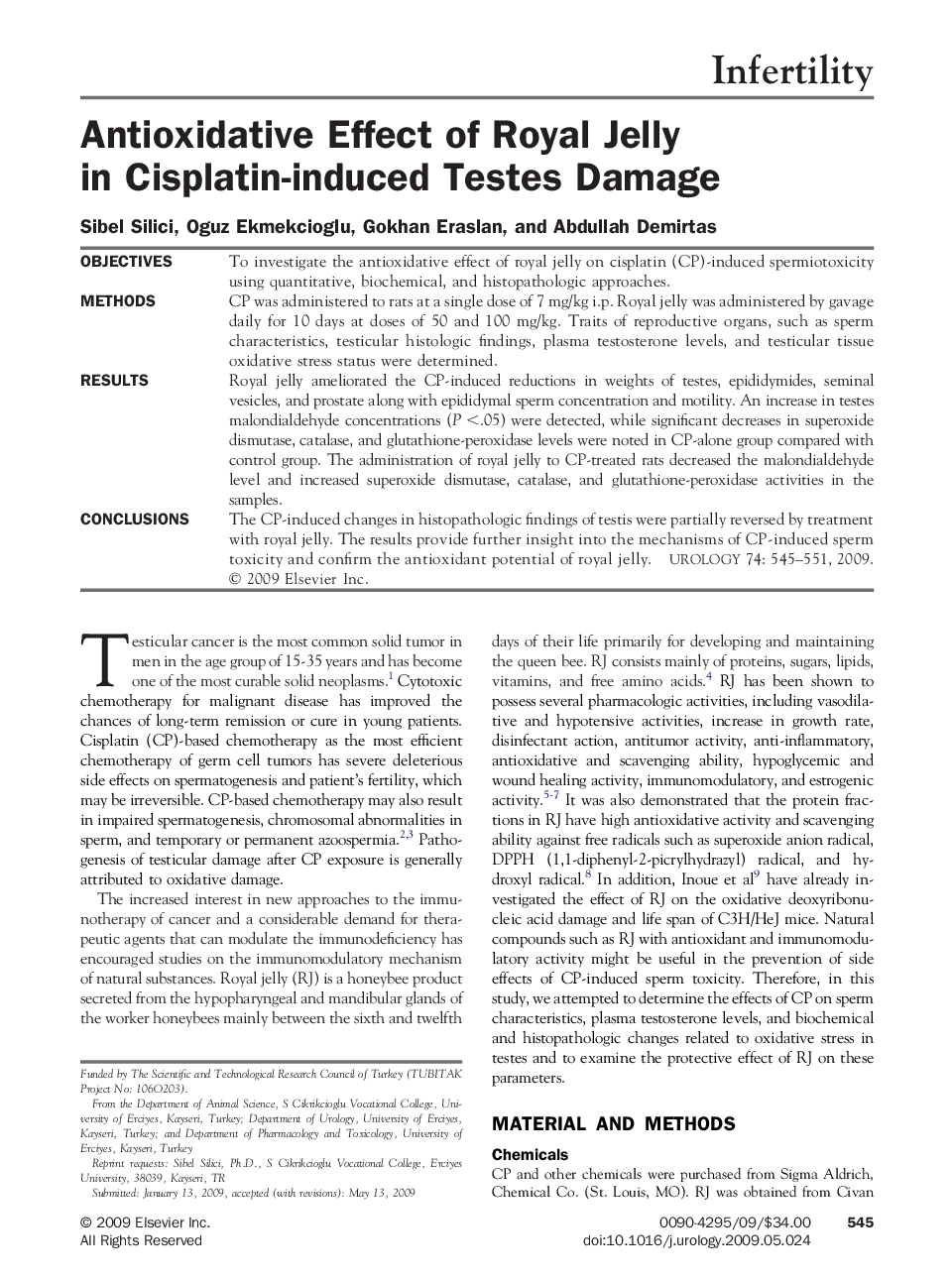| Article ID | Journal | Published Year | Pages | File Type |
|---|---|---|---|---|
| 3904044 | Urology | 2009 | 7 Pages |
ObjectivesTo investigate the antioxidative effect of royal jelly on cisplatin (CP)-induced spermiotoxicity using quantitative, biochemical, and histopathologic approaches.MethodsCP was administered to rats at a single dose of 7 mg/kg i.p. Royal jelly was administered by gavage daily for 10 days at doses of 50 and 100 mg/kg. Traits of reproductive organs, such as sperm characteristics, testicular histologic findings, plasma testosterone levels, and testicular tissue oxidative stress status were determined.ResultsRoyal jelly ameliorated the CP-induced reductions in weights of testes, epididymides, seminal vesicles, and prostate along with epididymal sperm concentration and motility. An increase in testes malondialdehyde concentrations (P <.05) were detected, while significant decreases in superoxide dismutase, catalase, and glutathione-peroxidase levels were noted in CP-alone group compared with control group. The administration of royal jelly to CP-treated rats decreased the malondialdehyde level and increased superoxide dismutase, catalase, and glutathione-peroxidase activities in the samples.ConclusionsThe CP-induced changes in histopathologic findings of testis were partially reversed by treatment with royal jelly. The results provide further insight into the mechanisms of CP-induced sperm toxicity and confirm the antioxidant potential of royal jelly.
